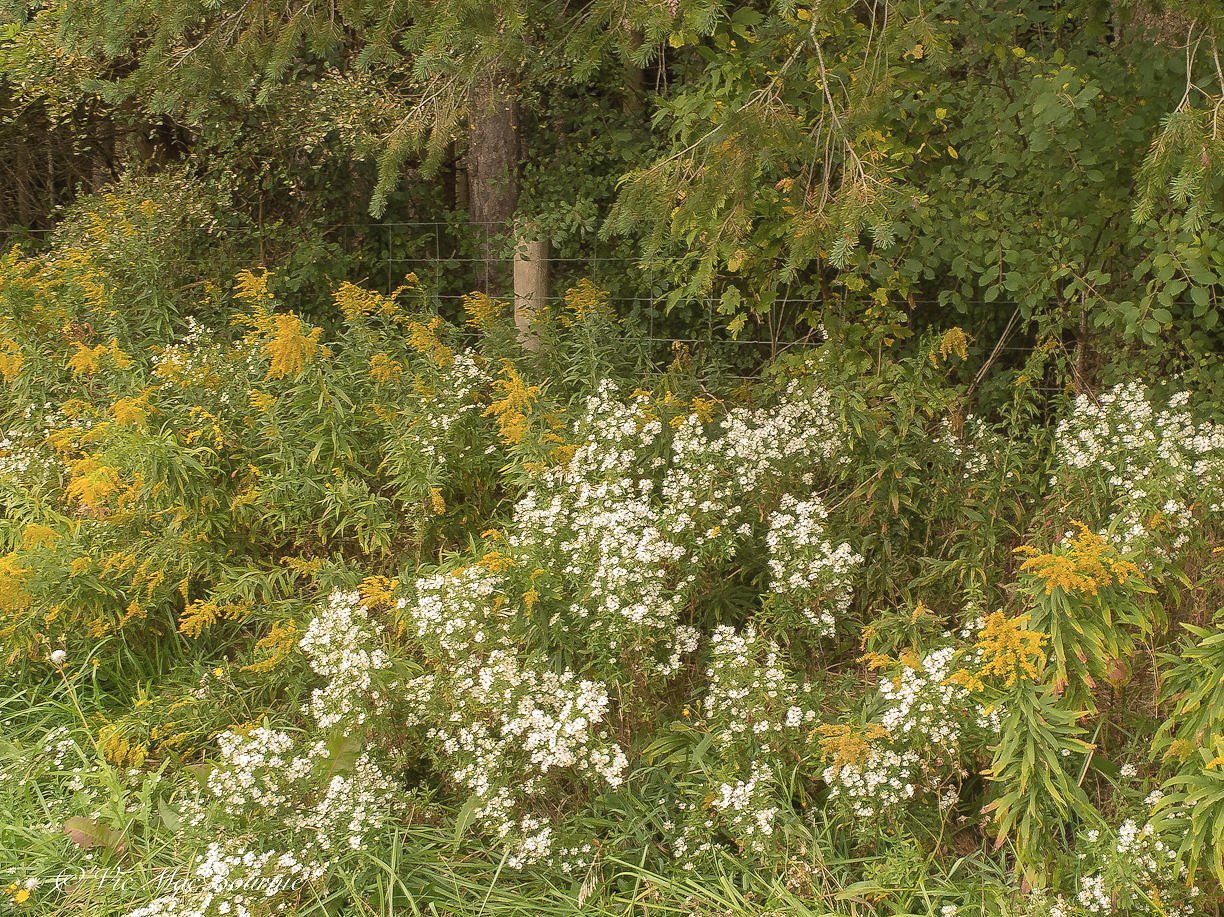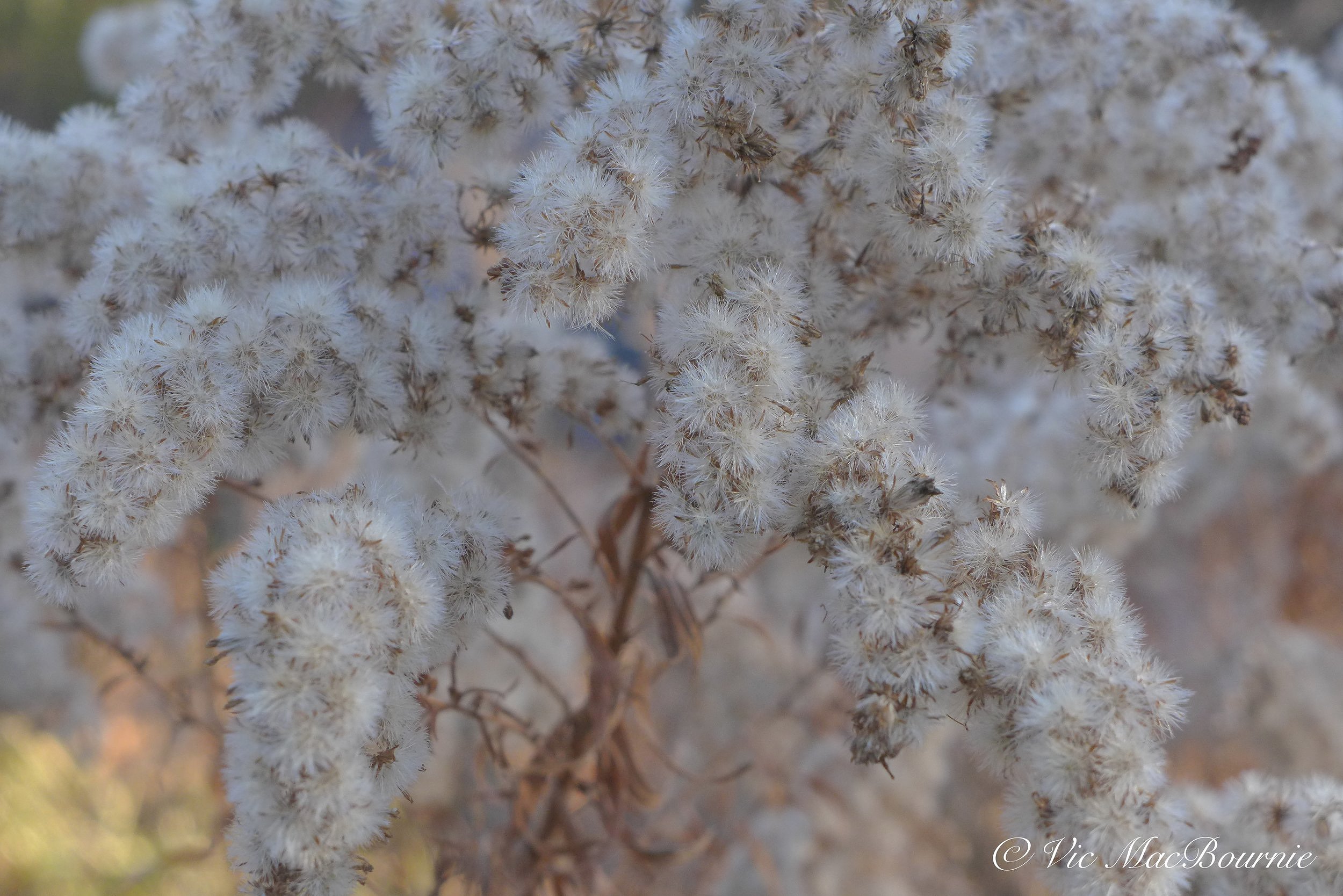Native Goldenrod: Fall’s golden gift to wildlife gardeners and photographers
Goldenrod might be the best addition to your fall garden
It might be common in your area along highways and open fields, but don’t underestimate the benefits of goldenrod in your garden.
This structural plant is not for the weak of heart. Mine stands more than six feet high, stretching up to the sky and, like a neon sign along a deserted highway, announces to every monarch, swallowtail, bee and butterfly in the area to come on over for some good eats. And they are happy to oblige.
In fact, the National Wildlife Federation, pointing to the work of author and biologist Doug Tallamy states: “Tallamy’s studies show that goldenrods provide food and shelter for 115 butterfly and moth species in the U.S. Mid-Atlantic alone. More than 11 native bee species feed specifically on the plants, and in fall, monarch butterflies depend on them for nectar to fuel their long migrations. Even in winter, songbirds find nourishment from goldenrod seed heads long after the blossoms have faded.”
If you are looking for more information on growing native flowers, you might be interested in going to my comprehensive article: Why we should use native plants in our gardens.
Goldenrod growing along the edge of a field bringing its fall early fall colour to the landscape and garden.
Does Goldenrod cause hay fever?
Let’s get this straight right off the bat – goldenrod does not cause hay fever – that would be ragweed. Goldenrod’s pollen is too heavy to be blown in the wind, while ragweed pollen takes to the air at the mere hint of a slight breeze.
It’s also important to note that not all Goldenrod is aggressive in the garden. It’s also probably a good time to note that Goldenrod is available in many forms – all beneficial to local pollinators.
We’ll get into all the different types and which ones might be good for your garden later, for now let’s just admire this native plant for what it is – a pretty, yellow magnet for bees, butterflies and other insects.
I just let it grow in my front and back gardens, not really worrying too much about its aggressive tendencies. But that’s just me.
Flower photographers love Goldenrod in the garden
I find it perfect for photography because, not only do the yellow masses of flowers form a great backdrop for the butterflies, the plants are so tall that I really don’t even have to bend over to get shots of the butterflies, insects and birds. Now, that’s a real bonus.
For more on photographing flowers in your garden, please check out my comprehensive post on Photographing flowers in your garden.
A native bumblebee works the goldenrod in our backyard as it comes into bloom.
Let’s take a closer look at this fall performer.
Goldenrod is actually a common name for a number of plants in the sunflower family within the genus Solidago. In fact, there are around 120 species of goldenrods native to the Americas, northern Africa, Europe and Asia.
In North America, about eight of these species are used as garden plants where they happily set roots in full sun to partial sunny areas in almost any average to below-average, well-drained soil. These herbaceous perennials, that are pretty much pest free, can grow from about 1.5-6 feet tall with a spread of 1-3 feet.
In very fertile soil, you may have to stake them to stop them from falling over when their heavily flowering tops get too heavy to stand on their own.
Although there are a number of hybrids that have a more compact size or flower more heavily, don’t bother with them. Stick to the native varieties and you will likely have fewer problems, help native wildlife more and sleep easier at night knowing you’re not introducing some weird, aggressive new plant to our already compromised natural environment struggling to fend off all the cultivars we have introduced over the years.
Goldenrod fills many roadsides in late summer and fall creating a tapestry of subtle fall colours.
Some native varieties to consider include:
Blue-stemmed goldenrod (Solidago caesia) is one of the more rare Goldenrod species and sports the common latesummer and fall bright yellow flowers. The plant gets its name from its arching purplish stems. This particular Goldenrod is noted because it not an aggressive spreader and produces good cut flowers. Plant it along with Smooth Blue Aster and New England Aster for some spectacular fall colour and pollinator action. Blue Stemmed Goldenrod is hardy from zone 4 through 7.
Autumn Goldenrod (Solidago sphecelata), is the native plant that horticulturalists like to use to make various cultivars from primarily because of its compact size. Autumn Goldenrod tends to stay to within a foot or two with its arching stems and plumes of yellow flowers.
Showy Goldenrod (Solidago speciosa) lives up to its name with its dense clusters of small yellow flowers that grow in a pyramidal- or club-shaped column, sitting atop the 1-5-foot tall reddish stems. It is considered one of the showiest of Goldenrods.
Sweet Goldenrod (Solidago odora) This is a more compact native variety that reaches two- to four-feet. You’ll find it growing naturally in dry, sandy, open wooded areas thickets and ravines. It’s distinguishing feature is its anise-scented leaves and the fact that it is another goldenrod that is considered less aggressive in a garden environment. It is a clump-forming, easy to grow, low maintenance plant that reaches up to 4-feet high and attracts birds, bees butterflies and hummingbirds. It’s found growing naturally in meadows or open woodlands.
White Goldenrod (Solidago bicolor) you guessed it, rather than sporting the typical yellow flowers, this goldenrod likes to show off white blooms.
Wrinklelfeaf or Rough Goldenrod (Solidago rugosa) if you have a moist area in the garden, this three- to five-foot goldenrod is the one to use. It’s distinctive narrow, toothed, rough-surfaced leaves and rough, hairy stems earned the plant its name.
Even as cut flowers the Goldenrod looks great in the garden but be careful, they’ll still be attracting the bees.
It’s time for a little gold in the garden
Just about the time the Black-eyed Susans get into full swing, the Goldenrods come along and add even more gold to our landscapes. They ride that gold right into late fall and are still adding to the beauty of the garden when the snow falls and forms a little blanket atop the browning flower clusters.
Throughout fall, the goldenrod and asters form a perfect combination of warm golds and cool blues along our roads and in meadows creating incredibly textured landscapes throughout Ontario and into the north-eastern parts of the United States.
The activity these plants create among the remaining bees, butterflies, hummingbirds and other backyard wildlife is reason enough to grow our own patches of these lovely native plants. We let ours grow wild where the seeds land, but these plants can be tamed and grown in the back of gardens with great success.
If you don’t already have them in your woodland/meadow garden, put them on your list for next year.
You won’t be disappointed.





